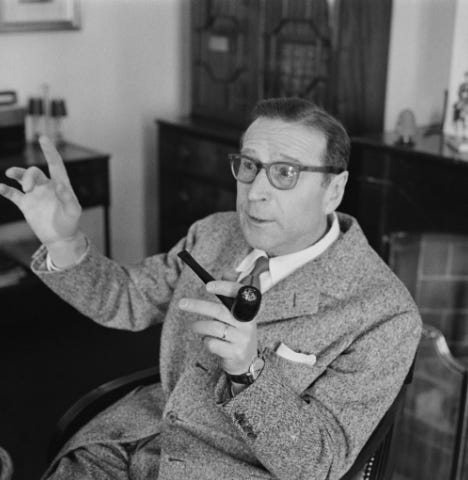TWA for Monday, February 13, 2017
“Antilamentation” by Dorianne Laux from The Book of Men. © W.W. Norton & Company, 2011.
ORIGINAL TEXT AND AUDIO - 2017
Galileo Galilei was brought to Rome to face charges of heresy on this date in 1633. He had been arguing with the Roman Catholic Church for some time about astronomical matters. Church doctrine taught that the Earth was the center of the universe, with the sun, moon, and stars all revolving around it. The Church pointed to the writings of Aristotle and Ptolemy, as well as the Bible, to support this view. To suggest anything else would imply that we did not enjoy a central place in God’s creation.
But Galileo had studied the work of Nicolaus Copernicus, a Polish astronomer who had put forward the theory that the Earth was not even the center of the solar system, let alone the whole universe. So Galileo wrote a book called Dialogue Concerning the Two Chief World Systems. Pope Urban VIII allowed the book to be published in 1632, provided that Galileo also presented the Church’s side of the argument. Galileo presented the material as a series of discussions between two philosophers — who each took the position of one of the theories — and a neutral but well-educated layman. A fool named Simplicius presented the Aristotelian theory, and was soundly defeated. Pope Urban could not let this stand, so he summoned Galileo to appear before the Roman Inquisition.
Galileo was found guilty of heresy and ordered to recant; he wrote: “Therefore, desiring to remove from the minds of your Eminences, and of all faithful Christians, this vehement suspicion, justly conceived against me, with sincere heart and unfeigned faith I abjure, curse, and detest the aforesaid errors and heresies, and generally every other error, heresy, and sect whatsoever contrary to the said Holy Church, and I swear that in the future I will never again say or assert, verbally or in writing, anything that might furnish occasion for a similar suspicion regarding me.” Galileo spent the rest of his life under house arrest in his villa in Arcetri, near Florence. The Dialogue was placed on the Catholic Church’s Index of Forbidden Books, where it remained until 1835.
It’s the birthday of Belgian mystery writer Georges Simenon, born in Liège (1903). He wrote over 500 novels and short stores, many of them featuring a compassionate detective named Jules Maigret, who enjoyed fine wine, his wife, and solving cases by pondering human nature, rather than using violence. Simenon said he got the idea for his detective while on a boating trip in The Netherland Canals. He said he imagined “a large, powerfully built gentleman I thought would make a passable inspector. As the day wore on, I added other features: a pipe, a bowler hat, a thick overcoat with a velvet collar, and, as it was cold and damp, I put a cast-iron stove in his office.”
Before Simenon hit it big with the Maigret novels, he wrote pulp fiction under 17 pen names and worked as a police reporter and rubbed elbows with prostitutes, murderers, and thieves, which helped make his novels more exciting. He once said, “We are all potentially characters in a novel — with the difference that characters in a novel really get to live their lives to the full.”
Simenon could write 80 pages a day and sometimes finish the draft of a novel in 10 days, a rigid schedule that required him to have doctor’s checkups before the start of each new work. He found characters names by thumbing through telephone directories from around the world and often wrote out detailed maps of the towns and cities in his books. William Faulkner was a big fan of Simenon, saying, “He makes me think of Chekhov.”
Georges Simenon’s Maigret books include Maigret and the Yellow Dog (1931), Maigret’s Dead Man (1948), Maigret’s Memoirs (1951), and Maigret Takes the Waters (1968).
On writing, he said: “Writing is considered a profession, and I don’t think it is a profession. I think that everyone who does not need to be a writer, who thinks he can do something else, ought to do something else. Writing is not a profession but a vocation of unhappiness. I don’t think an artist can ever be happy.”
Today is the birthday of American religious historian Elaine Pagels born in Palo Alto, California (1943), whose books about the Gnostic Gospels have inspired debate and become international best-sellers. The Gnostic Gospels are 52 ancient texts, written from the second to the fourth century A.D. and discovered in the Egyptian desert in 1945 by an Arab peasant. The texts include sayings attributed to Jesus that differ from those in the New Testament. “Gnostic” comes from the Greek word “gnosis,” which means “knowledge.” Pagels is best known for her book The Gnostic Gospels (1979), which explores divisions in the early Christian Church.
One of the texts is the “Gospel of Thomas,” long thought to have disappeared from the literate world sometime around A.D. 400. Pagels’ says: “The Gospel of Thomas claims to be the secret sayings of Jesus. There are 114 of them, so it says many things, but the central message is that Jesus is the one who reveals the divine light that brought the universe into being, and that you and I also reveal that light.” Pagels writes about the Gospel of Thomas in her book Beyond Belief: The Secret Gospel of Thomas (2003).
Pagels was raised in a mostly Protestant family, though she rebelled as a teen and joined an Evangelical church. Though she didn’t stay, she remained fascinated by Christianity. She learned Greek, Latin, Coptic, Hebrew, French, Italian, and German in order to read ancient Christian texts. It takes her about 10 years to research and write each of her books.
Her books include The Origin of Satan (1995), Reading Judas (2007), and Revelations: Visions, Prophecy, and Politics in the Book of Revelation (2012).
It’s the birthday of the first man to travel faster than the speed of sound: Chuck Yeager, born in Myra, West Virginia, on this day in 1923.
He joined the Air Force as mechanic, became a fighter pilot during World War II, was shot down by Germans over France, escaped to Spain and then to England, and resumed air combat, flying many successful missions.
It was on October 14, 1947, that Chuck Yeager broke the sound barrier, Mach 1. He was at an altitude of 45,000 feet — about eight and a half miles up in the air. Fourteen minutes later, he was back on the ground, and he went home to bed to recuperate.
Be well, do good work, and keep in touch.®
Autographed copy of BOOM TOWN: A Lake Wobegon Novel





